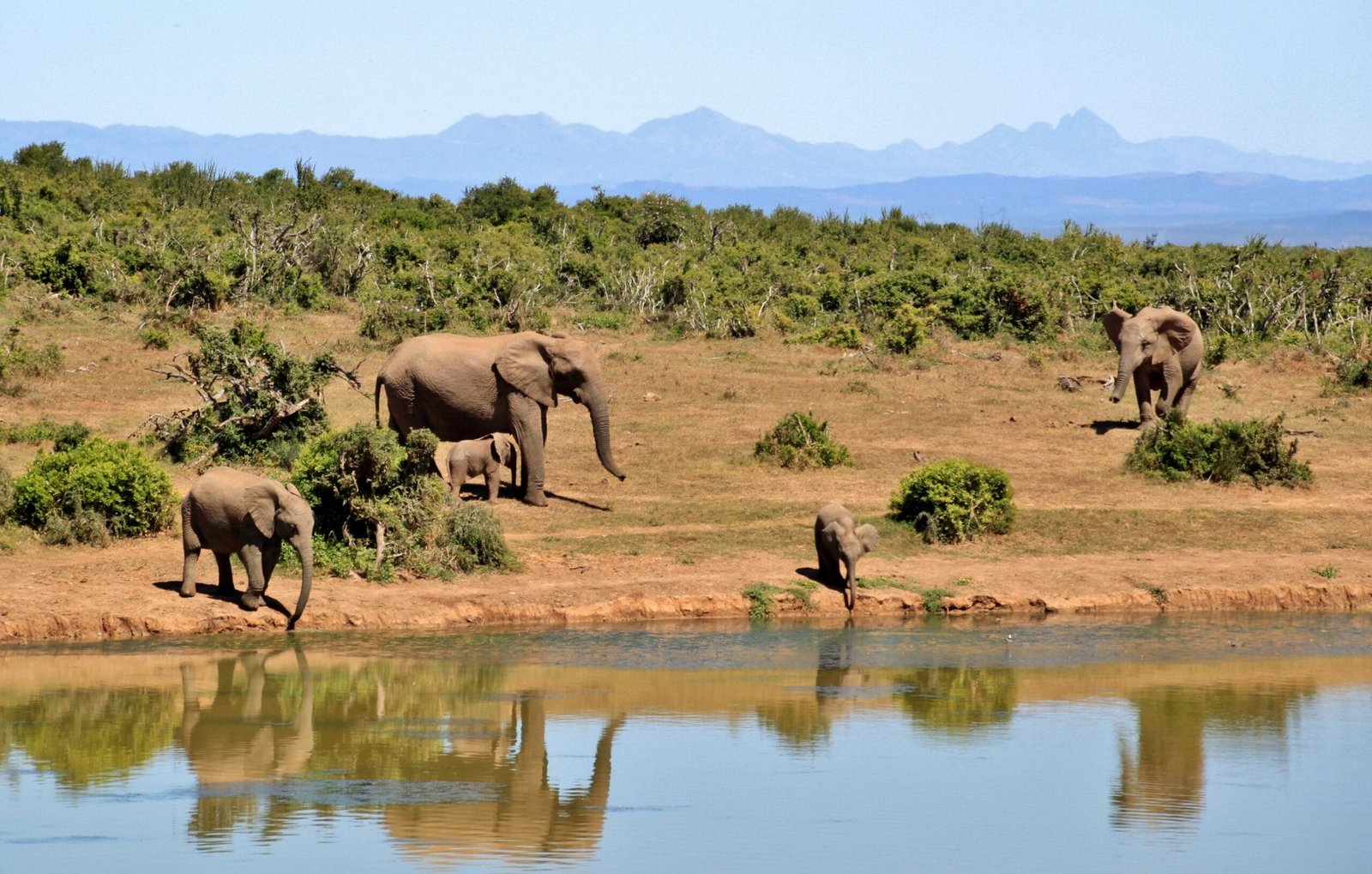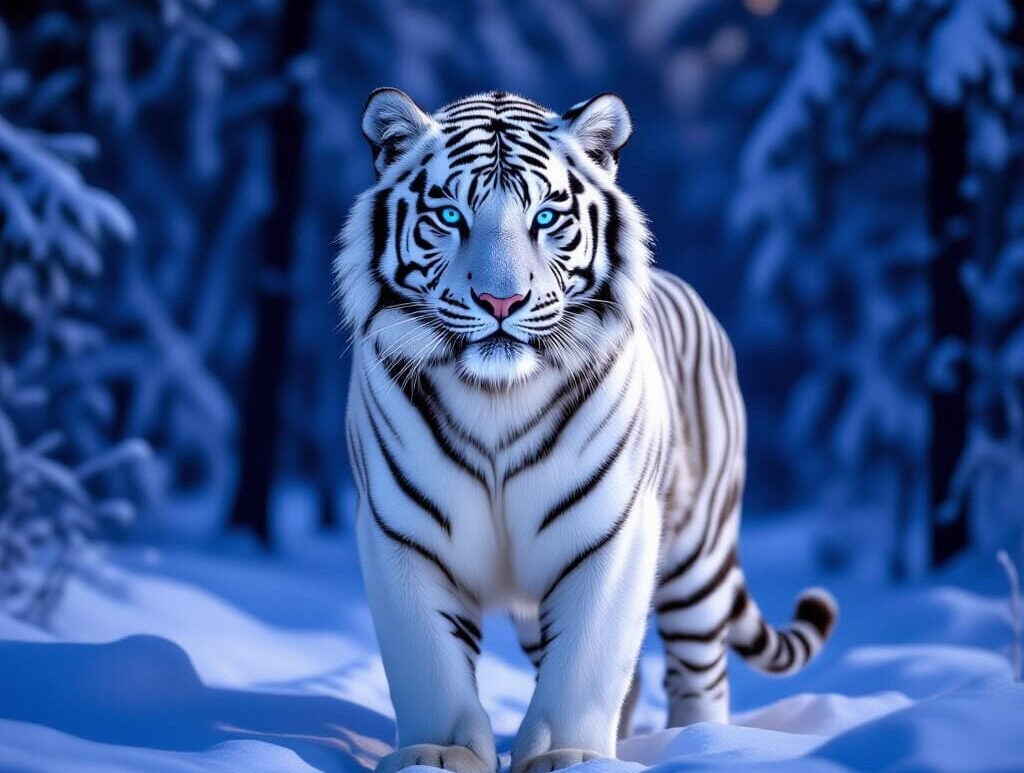The Allure and Rarity of the White Tiger
Few animals command as much fascination and awe as the white tiger. With its striking pale fur and icy blue eyes, the white tiger stands out among wild creatures not only for its beauty but also for its extreme rarity. Contrary to popular assumptions, the white tiger is not a separate species, but instead a Bengal tiger with a rare genetic mutation known as leucism. This mutation causes the distinctive lack of orange pigmentation, resulting in white fur with black or brown stripes. Despite their unique look, white tigers are no longer found in the wild—an unsettling fact that underscores both their mysterious allure and the perils these animals face in our changing world.
The Collapse of the Wild White Tiger
Historically, white tigers roamed the dense jungles, swampy mangroves, and forests of India and parts of neighbouring countries, including Bangladesh, Nepal, and Bhutan. Their pale colouration made them rare even centuries ago, with an estimated frequency of one in every 10,000 Bengal tiger births. Tragically, by 1958, the last known wild white tiger was shot by a hunter in India, erasing this extraordinary animal from its native landscapes forever. Now, no wild population of white tigers exists anywhere on Earth—an extinction caused by habitat loss, poaching, and human interference. The present reality is that every white tiger alive now lives in captivity, bred and maintained by humans.
The Shockingly Low Numbers: Only 200 Remain
Today’s data paints a sobering picture. There are only about 200 white tigers left in the world, and every single one of these animals exists within the confines of zoos, theme parks, and private exotic animal collections. The United States, India, and a handful of other countries are home to virtually all surviving white tigers in captivity, with none left in their natural habitats. These tigers are sometimes displayed in entertainment venues or kept as highly prized pets, but they can no longer be found prowling wild landscapes. This forced captivity marks a dramatic transformation in the fate of the white tiger, reducing it to a genetic curiosity protected from extinction only by ongoing human intervention.
The Genetics and Ethical Dilemma of Captivity
The scarcity of white tigers is driven by genetics. Their distinctive colouration is caused by inheriting two copies of a rare recessive gene. Because white tigers are so visually striking, breeders have long attempted to sustain their population through selective breeding. Unfortunately, the small gene pool means that inbreeding is common, leading to a high incidence of genetic disorders, including scoliosis, club feet, kidney problems, and crossed eyes. Many white tigers suffer poor health and reduced lifespans due to these practices, raising serious ethical concerns about whether continued captive breeding can be justified. Critics argue that white tiger breeding prioritises novelty and commercial appeal over genuine conservation and animal welfare.
The Conservation Puzzle: Tigers in Crisis
The white tiger’s fate is inextricably linked to the broader crisis facing all tigers. While white tigers are exclusive to captivity, wild tigers as a whole remain one of the world’s most endangered big cats. Current estimates suggest around 5,574 tigers of all subspecies survive in the wild, inhabiting protected reserves in India, Russia, Indonesia, Nepal, and a handful of other countries. Poaching, habitat destruction, and fragmentation continue to threaten tiger populations, even as some conservation efforts—particularly in India—show promise. Sadly, these positive trends for Bengal tigers have not facilitated the possible reemergence of white tigers in the wild, as the genetic odds of natural leucism are astronomically low, and hunting pressures long ago eradicated the last naturally born individuals.
The Role of Zoos and the Debate Over Survival
With no hope for wild recovery, zoos remain the white tiger’s only lifeline. They play a controversial part in the survival of this animal; on one hand, they prevent total extinction by maintaining fragile populations under managed care. On the other hand, there are persistent questions about the quality of life and genetic ethics associated with continued inbreeding and commercial display. Modern conservation organisations generally discourage the intentional breeding of white tigers, advocating instead for a focus on saving and restoring the wild populations and habitats of the Bengal tiger, not the orange Bengal tiger. Some sanctuaries and progressive zoos have phased out white tiger exhibits, shifting resources to broader conservation education and the preservation of true wildlife diversity.
Prospects for the Future: Education and Action
Despite the white tiger’s fate seeming sealed, its story serves as a striking warning. Their disappearance from the wild and precarious survival in captivity highlight both the fragility of rare wildlife and the far-reaching effects of human intervention, which can be both destructive and protective. The plight of the white tiger is now used by conservationists as an educational case, illustrating why the disruption of natural habitats and unnatural breeding for human spectacle often have unintended, tragic consequences. In the future, the lesson is clear: efforts should centre on maintaining the genetic health and wild habitats of tigers as a whole, rather than focusing solely on keeping the visually dramatic but genetically unhealthy white tigers in existence.
Conclusion: A Stark Reality Check
As of 2025, there are only about 200 white tigers left in the world, none of which exist outside industrialised captivity. The extinction of wild white tigers and the severe health impacts experienced by those bred in captivity are sobering indicators of how delicate nature’s balance can be. While some may delight in the rare sight of a white tiger in a zoo or rescue, these beautiful creatures represent more than a curiosity—they are a warning that once lost, nature’s wonders can be impossible to replace. Saving tigers—white, orange, or golden—demands global commitment not just in numbers but in ethics, habitat protection, and respect for natural diversity.
FAQ 1: How many white tigers are left in the world in 2025?
In 2025, approximately 200 white tigers remain globally, and every single one exists in captivity. No wild white tigers live anywhere on Earth, as the last wild individual was killed in India decades ago. Zoos, private collections, and theme parks are now the primary venues where these rare animals can be observed, marking a significant shift from their natural habitats to managed environments.
FAQ 2: Are white tigers a separate species from other tigers?
White tigers are not a separate species; they are Bengal tigers with a rare genetic mutation called leucism, which reduces pigment and leads to white fur with black stripes and blue eyes. This mutation is extremely rare, occurring in approximately one out of every 10,000 births, making actual white tigers even rarer in nature. Their scientific classification remains Panthera tigris tigris.
FAQ 3: Why do all remaining white tigers live in captivity?
White tigers have become extinct in the wild due to extensive hunting, habitat destruction, and their naturally low birth rate. The last wild white tiger was killed in 1958, and subsequent individuals survive only through human-controlled breeding efforts. Captive populations have continued to grow because their unusual appearance attracts visitors and breeders, rather than due to natural conservation or reintroduction programs.
FAQ 4: What health problems do white tigers face due to breeding practices?
Because white tigers are bred from a minimal gene pool, most are inbred to maintain their distinctive look. This practice has resulted in a high incidence of genetic problems—including skeletal deformities, heart defects, crossed eyes, and early mortality. These health issues have sparked ethical debates about the continued breeding of these animals for display or profit, rather than prioritising their welfare.
FAQ 5: Are white tigers considered endangered?
White tigers are not considered endangered in the traditional sense, as they are not naturally occurring in significant numbers and are the result of a rare mutation. They do not appear on conservation lists, such as the IUCN Red List. Instead, their rarity is due to unnatural breeding and commercial motivations, and conservationists generally discourage purposeful breeding of white tigers in favour of preserving healthy wild Bengal tiger populations.
FAQ 6: Where did wild white tigers originally live?
Historically, wild white tigers have lived in the forests, mangroves, and jungles of India, as well as in regions of Bangladesh, Bhutan, and Nepal to a lesser extent. However, their unique colouring made survival in the wild particularly challenging, and their population was always tiny, even before hunting and habitat loss drove them to extinction in nature.
FAQ 7: How does the fate of white tigers reflect the wider tiger conservation crisis?
The story of the white tiger is deeply intertwined with the broader challenges facing all tigers. While white tigers are only found in captivity, wild tiger numbers remain critically threatened globally—despite signs of recovery in some countries, thanks to intensified conservation efforts. With about 5,574 wild tigers left worldwide, the white tiger’s extinction in nature acts as a cautionary tale about genetics, habitat protection, and the consequences of human intervention.
You may like to explore
Work Life Balance: Practical Ways to Stay Happy & Productive
The Power of Gratitude: Small Changes for a Happier Lifestyle
Finding Inspiration: A Guide to Mindful Living Now




